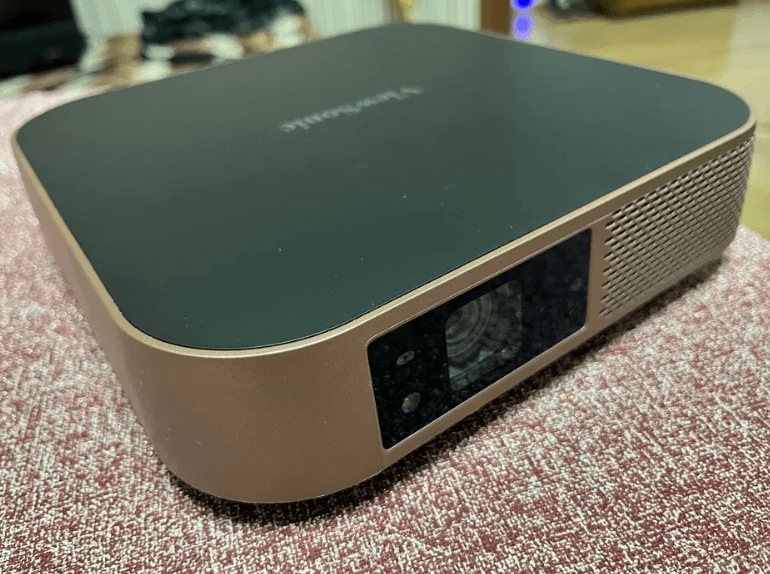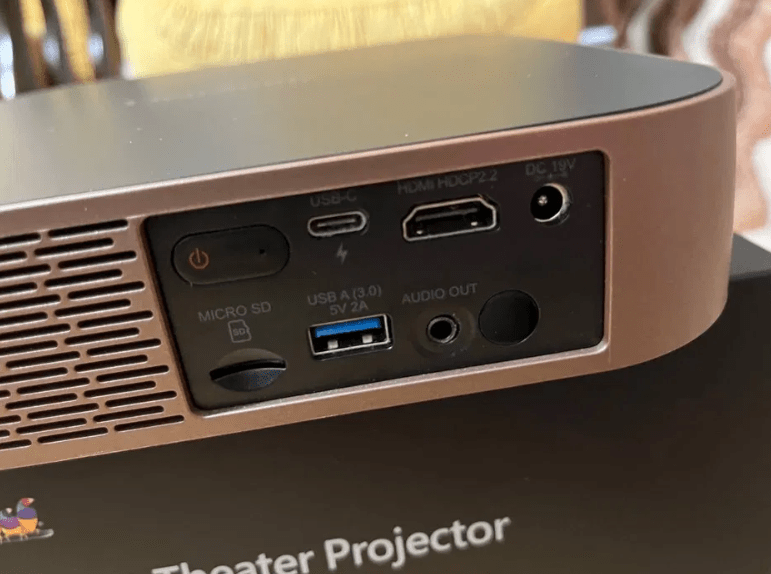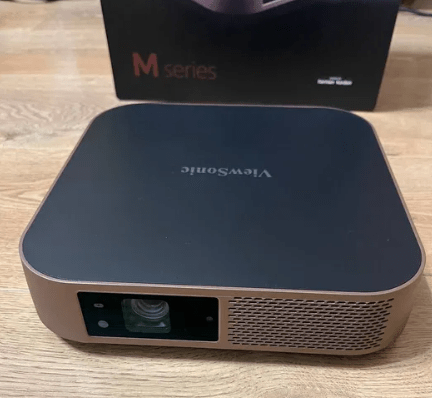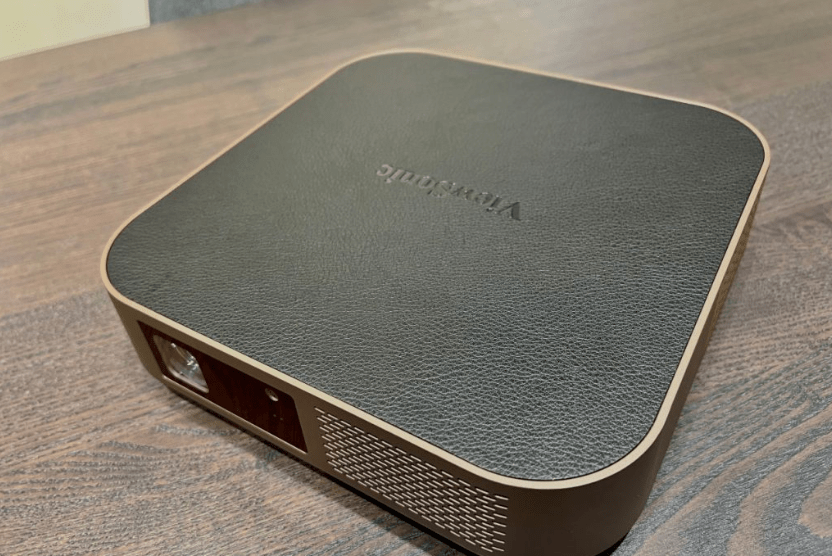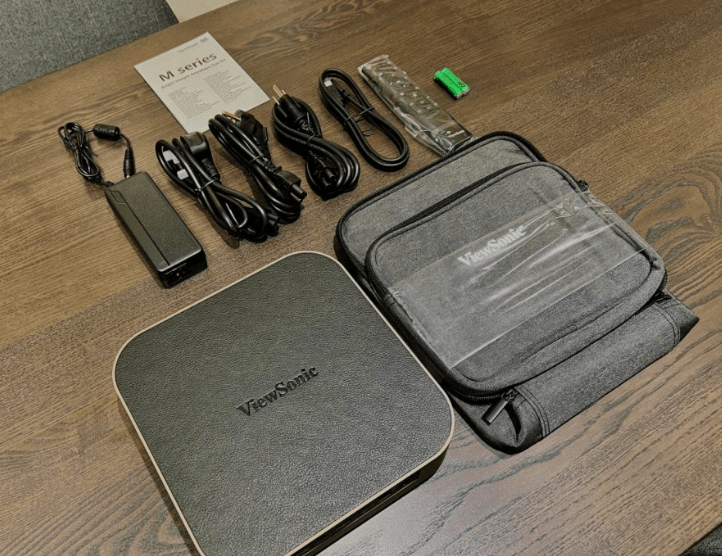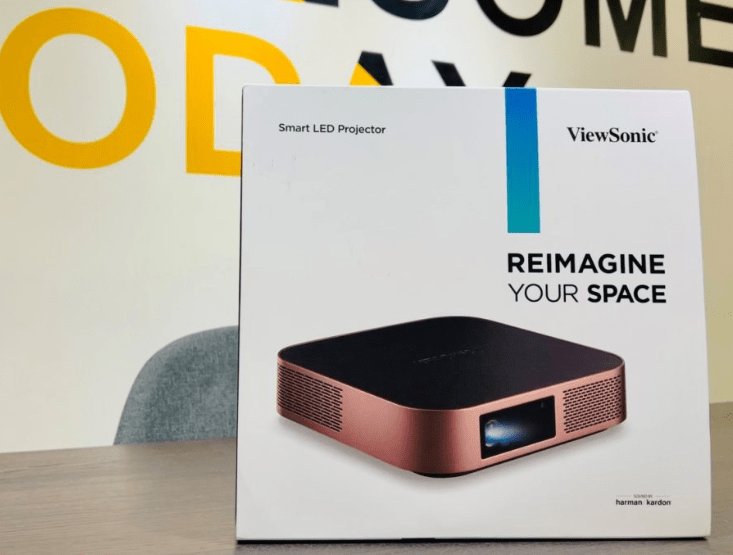At gagadget.com, your trust is our priority. We follow strict quality standards in our research, tests, and analysis of video projectors, to give you the best experience. Learn more
Viewsonic M2 vs Viewsonic M2W
Hey everyone, Jim's here! Today, I'm comparing two mobile projectors from ViewSonic: the M2 and the newer M2W. Both models offer easy setup, built-in streaming, and compact designs perfect for on-the-go entertainment. But there are some key differences in resolution, brightness, and features that could make one a better fit for your needs.
I've spent hands-on time with the M2 and M2W, evaluating image quality, ease of use, gaming performance, and overall value. In this in-depth ViewSonic M2 vs M2W comparison, I'll highlight where each projector excels and help you decide which one to choose for your portable big screen adventures. Let's get started!
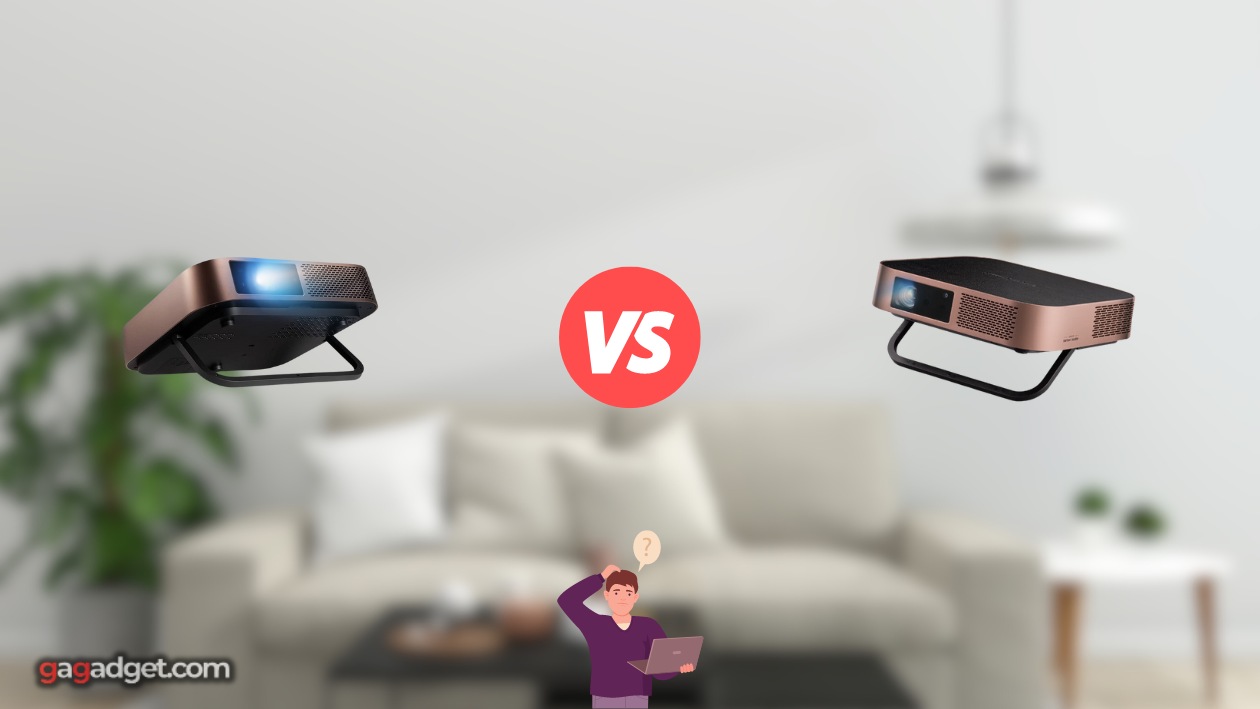
ViewSonic M2 vs M2W: Quick Overview
Here are the key takeaways if you're short on time: The ViewSonic M2 and M2W are very similar LED projectors overall. Both feature an ultra-portable design, autofocus, built-in streaming, and 30,000 hour light source life. The main differences are resolution and brightness. The original M2 has a sharper Full HD 1080p image while the M2W is slightly brighter at 700 ANSI lumens (vs 500) but tops out at 720p HD. The M2W also adds a few extra keystone and wireless features.
I recommend the ViewSonic M2 if you want the sharpest, most detailed picture quality and don't mind sacrificing a bit of brightness. But if you value higher light output for daytime viewing or outdoor use and are okay with 720p resolution, the M2W is the way to go. From my experience, both offer impressive bang for the buck in the portable projector category.
Table of Contents
- ViewSonic M2 vs M2W: Full Comparison
- M2W vs M2: Design
- ViewSonic M2 or M2W: Owner Reviews
- ViewSonic M2 and M2W Alternatives
- Should You Buy the ViewSonic M2 or M2W?
ViewSonic M2 vs M2W: Full Comparison Table
| Specs | ViewSonic M2 | ViewSonic M2W |
| Image | ||
| Native Resolution | 1920 x 1080 (Full HD) | 1280 x 800 (WXGA) |
| Brightness (ANSI Lumens) | 500 | 700 |
| Light Source | LED | LED |
| Light Source Life | 30,000 hours | 30,000 hours |
| Zoom | No | No |
| Throw Ratio | 1.23:1 | 1.20:1 |
| Digital Keystone | Horizontal & Vertical | Horizontal & Vertical |
| Wireless Mirroring | Yes | Yes (+ Bluetooth) |
| Max Image Size | 100" / 254 cm | 150" / 381 cm |
| Speakers | 3W x2 Harman Kardon | 3W x2 Harman Kardon |
| Smart TV | No (Streaming via HDMI) | No (Streaming via HDMI) |
| Input Lag | ~ 125ms @ 1080p/60Hz | Not Specified |
| Power Consumption | 90W | 71W |
| Dimensions (W x D x H) | 8.7" x 8.7" x 2.1" | 8.9" x 8.9" x 2.2" |
| Weight | 2.9 lbs | 3.1 lbs |
| Release Year | 2019 | 2022 |
Starting with brightness, the ViewSonic M2W has a clear advantage at 700 ANSI lumens compared to the M2's 500 lumens. I found this made a real difference in well-lit rooms or with mild ambient light. The M2W was able to maintain a watchable picture on my 100" screen with a couple lamps on, while the M2 needed near-total darkness to look its best. So if you plan to use your projector during the day or don't have total light control, the M2W's extra lumens are significant.
However, the original M2 delivers sharper image quality thanks to its native 1920 x 1080 resolution. Text looks crisper, fine details are better resolved, and the pixel structure is less noticeable - especially from a close viewing distance. The M2W tops out at 1280 x 800 resolution, so while it accepts a 1080p signal, you're not getting the full detail of Full HD content. Both projectors look very good for their size and price, but the M2 is the clear winner if you want the highest definition.
Color performance, conversely, is basically a wash between the two models. Both utilize ViewSonic's Cinema SuperColor+ technology to achieve 125% Rec.709 coverage. This is enough to deliver vibrant, well-saturated hues across a range of content, from animation to live sports. Skin tones look natural, primaries pop nicely, and there's good gradation between shades. Neither one is a reference display but both are a clear step up from budget LED projectors I've tested.
Contrast is also quite similar between the M2 and M2W. The cheaper LED light engine means black levels are more of a dark gray than true black. And highlights aren't searingly bright like a UHD TV. But with the right expectations, both offer a pleasingly dynamic image with solid depth and pop. You'll want to pair them with a low gain screen for maximum punch in a dark room, but they hold their own against more expensive portable DLP models.
Setup and placement are essentially identical for both the M2 and M2W. The 1.2:1 throw ratio means you'll need around 9-10 feet of distance for a 100" screen - pretty standard for this class. The autofocus works quickly to dial in sharpness, and the automatic keystone correction does an adequate job squaring up the image to the screen.
The M2W does add optional 4-corner correction for fine geometry tweaks and slightly wider keystone range (+/- 45 degrees vs the M2's +/- 40 degrees). This allows a bit more flexibility for off-angle placement on a shelf or table. But neither projector has zoom or lens shift, so you'll need to carefully consider your installation location for the best possible picture.
Both units have a pair of 3W speakers tuned by Harman Kardon - a premium touch at this size and price point. They get adequately loud and clear for casual viewing but understandably lack deep bass or expansive soundstage. For a more cinematic experience, you'll want to connect external speakers via the 3.5mm output, USB-C, or Bluetooth on the M2W.
On the smart features front, neither the M2 nor M2W has full Android TV or a similar integrated OS. But both do support wireless screen mirroring from phones, tablets, and computers. This is reasonably effective for sharing quick media, presentations, and the like. Anything requiring precise control is best done wired over HDMI, though, as I noticed some lag and occasional hiccups over Wi-Fi.
For gaming, the ViewSonic M2 measures around 125ms of input lag at 1080p/60Hz. That's too high for twitchy shooters or fighting games but serviceable for slower-paced RPGs, adventures, and platformers. ViewSonic doesn't provide an official figure for the M2W but I expect similar if not slightly higher latency due to the additional processing for the higher brightness. Neither are a substitute for a true gaming projector but both are fine for casual play.
M2W vs M2: Design
The ViewSonic M2 and M2W have extremely similar designs, each sporting a low-profile rectangular white chassis with rounded corners and a centrally mounted lens. Physical buttons for power, settings, and keystone correction flank the lens housing. And the HDMI, USB, and audio ports are all side-facing for easy access.
ViewSonic M2 Design
ViewSonic M2W Design
Dimensionally, both projectors are nearly identical in width and depth at roughly 8.8 x 8.8 inches. The M2W is a smidge taller at 2.2 inches vs the M2's 2.1 inches - likely to accommodate the higher-wattage LED light engine. Weight is also similar at 2.9 pounds for the M2 and 3.1 pounds for the M2W.
This makes both ultra-portable for on-the-go use or easy room-to-room movement around the house. They'll readily fit into a backpack, large purse, or carry-on luggage for work trips and vacations. Just note that neither has an internal battery, so you'll need to bring along a sufficiently powerful USB power bank for cord-free outdoor use.
Fan noise is quite low on both models, with a rated output of only 30dB. That's barely above a whisper and easily drowned out by the onboard speakers or any external audio. I barely noticed it from a few feet away, even in Eco lamp mode or a quiet room. Thermal performance is also very good - neither unit got excessively hot even after a 2-hour movie during my testing.
ViewSonic M2 or M2W: Owner Reviews
Let's see what actual buyers have to say about their experiences with the ViewSonic M2 and M2W portable projectors:
ViewSonic M2 Owner Reviews
Praises: "The picture quality is excellent for the size - 1080p content looks crisp and detailed even on a 100" screen. Colors are surprisingly good too."
"This little projector is so convenient for outdoor movie nights. We just hook up a streaming stick and external speaker and we're good to go. The autofocus is also a nice touch."
***
Drawbacks: "500 lumens is really not enough for any daytime viewing, even with the curtains drawn. You need near total darkness to get a watchable image."
"The integrated speakers are pretty weak. They're fine for a quick YouTube video but for movies or shows, you'll definitely want something beefier."
ViewSonic M2W Owner Reviews
Praises: "I'm impressed by how bright this projector is for the size. 700 lumens is enough to get a decent 80-90" picture with some lights on. Great for casual daytime viewing."
"The setup was super easy with the autofocus and keystone. I just plop it on a table, connect my Roku, and I'm up and running in under a minute."
***
Drawbacks: "The 720p resolution is noticeably softer than 1080p projectors I've used. It's fine for movies and shows but not ideal for detailed presentations or spreadsheets."
"The fan noise is kind of high-pitched and whiny, especially in the brighter lamp mode. It's not super loud but it is annoying during quiet scenes."
ViewSonic M2 owners frequently praise the sharp 1080p picture quality, rich colors, and space-saving design. Many use it for impromptu outdoor movie screenings or dorm room gaming sessions. The main complaints are the low brightness for daytime use and lackluster built-in audio.
M2W buyers appreciate the higher 700 lumen output for lights-on viewing flexibility. The quick, user-friendly setup and compact form factor also earn high marks. On the downside, some users notice a lack of fine detail compared to native 1080p projectors, and a few note a high-pitched whir from the fan.
Both models receive generally positive ratings for build quality and reliability. While no projector is perfect, most owners feel the M2 and M2W exceed expectations for the price, delivering a big screen experience far beyond the average TV or monitor. ViewSonic's 3 year warranty and responsive customer service also instill confidence for those new to projectors.
ViewSonic M2 and M2W Alternatives
If you're not sold on the ViewSonic M2 or M2W, here are a few other strong portable LED projectors to consider:
- XGIMI Halo: A 1080p DLP projector with 800 ANSI lumens, built-in Android TV 9.0, auto keystone and focus, and a 2 hour battery. Ideal for outdoor movie nights;
- Anker Nebula Solar Portable: Another 1080p option with 400 ANSI lumens, HDR10, Android TV 9.0, autofocus and keystone, and a 3 hour playtime. Great for backyard gatherings.
The XGIMI Halo is a compelling M2 alternative if you want the convenience of Android TV streaming built-in. It's a bit brighter at 800 lumens and adds a 2 hour battery for more freedom outdoors. The tradeoff is a slightly higher price and no 3D or full Rec.709 color support like the M2.
In the ultra-portable 1080p category, the Anker Nebula Solar is another strong contender. While not as bright as the M2 at 400 lumens, it offers similar resolution, setup ease, and smart features in an even smaller package. The 3 hour battery is also great for on-the-go movie screenings or gaming sessions.
Should You Buy the ViewSonic M2 or M2W?
After thorough hands-on testing, it's clear the ViewSonic M2 and M2W are both highly capable portable projectors well-suited for on-the-go entertainment. With their long-life LED light engines, automatic setup, multiple connectivity options, and space-saving designs, they're easy to use and enjoy in a variety of settings. From backyard movie nights to dorm room gaming to office presentations, they have the features and flexibility to fit your needs.
Choosing between the two really comes down to your resolution and brightness priorities. If you want the sharpest, most detailed HD image and don't mind sacrificing some lumens, go for the ViewSonic M2. Its native 1920 x 1080 resolution is a meaningful step up from 720p projectors, letting you sit closer to the screen without seeing pixels. It's the clear choice for discerning viewers who plan to use their projector in a dark or dimly lit space.
On the flip side, if you value higher brightness for a more flexible viewing environment, the ViewSonic M2W and its 700 ANSI lumens is the way to go. The extra light output allows for a watchable picture with more room lights on - great for daytime use or social gatherings. And while it tops out at 1280 x 800 resolution, the M2W's added pop helps compensate for the slightly softer image. For most content, you'll still be very happy with the HD picture quality.
As I always say, the best projector is the one you'll actually use. And both the ViewSonic M2 and M2W make it easy to enjoy a big screen experience wherever your adventures take you. With their fast setup, long-life LEDs, rich colors, and ultra-portable designs, they're ready to elevate your entertainment at a moment's notice. Whether you're a road warrior, movie buff, gamer, or just want a fun way to share memories with friends and family, these mighty minis deliver impressive visuals far beyond their size.
That's a wrap on my ViewSonic M2 vs M2W breakdown. Hopefully I've made your decision a bit easier, but feel free to hit me with any other questions. I'm always happy to help my fellow big screen enthusiasts find their perfect portable projector match!
Go Deeper:
